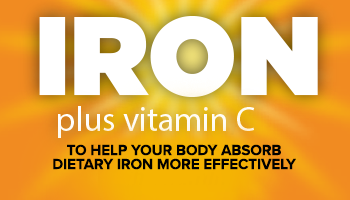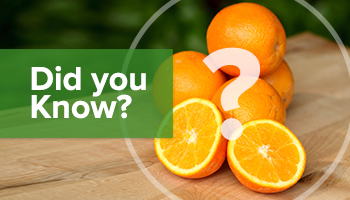FAQs
-
Why do we need iron in our diet?
Iron plays a key role in helping red blood cells deliver oxygen to the body. Iron deficiency can cause anemia, a condition in which your blood lacks healthy red blood cells. It can also have other damaging effects—such as delaying a child’s growth, damaging a person's ability to think and weakening their resistance to infection.
-
Why is vitamin C often recommended along with an iron supplement?
Vitamin C helps the body absorb iron. So, whether you are eating iron-rich foods or taking an iron supplement, vitamin C taken at the same time can help with iron absorption.
-
Can donating blood cause iron deficiency?
Donating blood isn't a common risk factor for iron deficiency, unless you give blood repeatedly over a short time.
-
How is iron deficiency anemia treated and prevented?
Iron deficiency can be treated and prevented by eating iron-rich foods such as in red meat, liver, raisins, spinach, broccoli and egg yolks. Iron supplements may also be recommended by the doctor.
-
How is iron deficiency diagnosed?
There's no single test to diagnose iron deficiency. However, doctors often do blood tests to screen for iron deficiency. They can use these methods to determine how severe the anemia is, its cause, and appropriate treatment. Mild to moderate anemia may have no signs or symptoms. In fact, anemia is often discovered unexpectedly on screening tests when doctors are checking for other problems.
-
What are signs and symptoms of iron deficiency?
Iron deficiency symptoms may include: being very tired, feeling weak, pale skin, shortness of breath, headache, dizziness or lightheadedness, inflammation or soreness of your tongue and unusual cravings for non-nutritive substances, such as ice, dirt or pure starch.
-
Who is at risk for iron-deficiency anemia?
Anyone can be at risk for iron deficiency anemia if your body lacks iron, for whatever reason. However, these groups generally have a higher risk:
- Women. Because they lose blood during menstruation, women in general are at greater risk of iron deficiency anemia.
- Infants and children. Infants, especially those who were low birth weight or born prematurely, who don't get enough iron from breast milk or formula may be at risk of iron deficiency. Children need extra iron during growth spurts, because iron is important for muscle development. If your child isn't eating a healthy, varied diet, he or she may be at risk of anemia.
- Vegetarians. Because vegetarians don't eat meat, they're at greater risk of iron deficiency anemia. Iron that comes from grains and vegetables isn't absorbed by the body as well as is iron that comes from meat.
- In healthy men and postmenopausal women, iron deficiency may be a sign of bleeding somewhere in the gastrointestinal tract.
-
What are some risk factors for iron-deficiency anemia?
These factors may increase the risk of iron deficiency anemia:
- Heavy menstrual periods
- Pregnancy
- A diet regularly low in iron
A known or hidden source of bleeding within your body, such as an ulcer, a bleeding tumor, a uterine fibroid, a colon polyp, colorectal cancer or gastrointestinal bleeding.
-
What are some causes of iron deficiency anemia?
Iron-deficiency anemia occurs when there is too little iron in the body. A person can have a low iron level for three reasons:
- Blood loss, either from disease or injury
- Not getting enough iron in the diet
- Not being able to absorb the iron in the diet
Iron-deficiency anemia also can develop when the body needs higher levels of iron, such as during pregnancy.
-
What is iron deficiency anemia?
Iron deficiency anemia is a common type of anemia. As the name implies, iron deficiency anemia is due to insufficient iron. Without enough iron, your body can't produce enough hemoglobin, a substance in red blood cells that enables them to carry oxygen.
*These statements have not been evaluated by the food and drug administration. This product is not intended to diagnose, treat, cure or prevent any disease.
-
Why did the color of the tablet change from red to grey?
The color change is the result of removing the red and caramel dyes from the product. The natural color of iron mixed with vitamin C and inactive ingredients results in a grey tablet. The new grey tablet is dye free – no artificial colors and no artificial flavors. The levels of iron and vitamin C remain the same.



